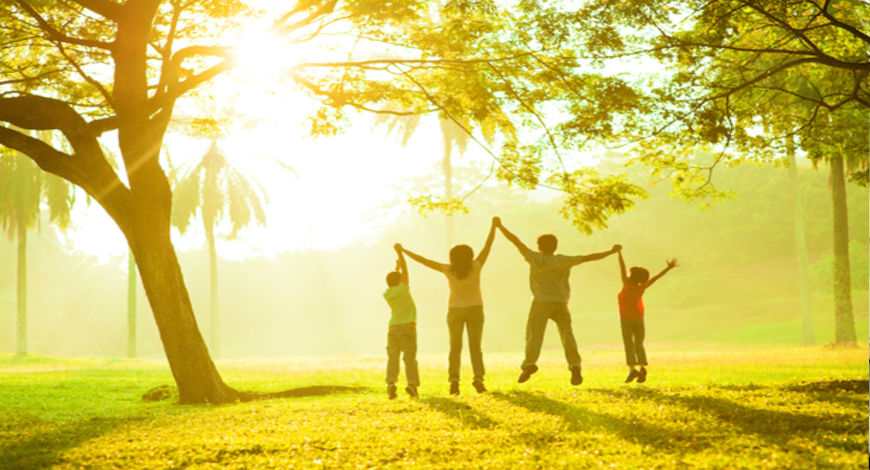Shopping Cart (0)
Your cart is currently empty.
TRIPLET30: 30% off on purchase of 3 books
Your cart is currently empty.

Published in Business World Education
Air and water pollution, global warming, smog, rising sea levels, melting glaciers and deforestation are some of the environmental concerns humanity faces today. In such a scenario, it becomes the responsibility of a parent to ensure that the world your children inherit is healthier. The first step towards achieving this is giving your kids the knowledge they’ll need to cope with tomorrow’s environmental concerns. This involves parents instilling a love for nature and all living things in their children. So, let’s look at how climate change affects your children and how you can teach them about the environment to help make the world a better place to live.
How can climate change affect your kids?
Impact of air pollution
Climate change results in poor air quality, which can cause breathing problems in children, especially those who have asthma. Besides this, air pollution is a primary cause of death for around 6,00,000 (approximately) children under the age of five each year.
Adverse childhood events (ACEs)
Adverse childhood experiences (ACEs) are potentially traumatic events that occur before a child reaches the age of 18. Such experiences can interfere with a person's health, opportunities and stability throughout their lifetime and can even affect future generations. Toxic stress caused by disasters has negative health consequences and furthermore higher-than-average temperatures impact a child’s ability to learn.
Weak immune system
As the temperature increases, it impacts harvest quality and production, jeopardising food security by driving up food prices, making it unaffordable for the poor. As a result, it leads to malnutrition and other health issues such as stunted growth, weakened immune systems, and long-term developmental issues in infants and small children.
Mental health problems
As the climate changes, extreme weather events like hurricanes, floods, and wildfires could become more dangerous. During a natural disaster, families are compelled to abandon their homes and assets. They may have trouble acquiring food and safe drinking water, or they may be forced to leave their home permanently. These traumatic events may lead to mental health issues such as sadness, anxiety, or post-traumatic stress disorder (PTSD) in children.
What role can you play as parents to educate your children about the environment?
Read relevant storybooks to your kids
You can educate children about the effects of climate change and encourage them to make a little effort every day to add up to a big difference in the long run. You can do this by reading books and stories about the importance of environmental protection. For example, the Climate Ninja by Merlinwand is a personalised story (where you may choose the name, avatar, and story) about an alien named Rumpus who seeks sanctuary on Earth when his planet Mootza is destroyed. Rumpus’ interaction with the protagonist is depicted in such a way that the kid does not perceive it as a social science lesson.
Use visuals to teach kids about the environment
“A picture is worth a thousand words; this adage is appropriate for children. You can use the internet to find photos that support your conversation or search for examples. Furthermore, movies such as Ice Age: The Meltdown and Happy Feet Two are fantastic ways to introduce young kids to the notion of global warming. And documentaries like An Inconvenient Truth and The 11th Hour may encourage older kids to contribute to preserving the planet.
Share your personal experiences
Talk about your own childhood experiences. Tell your kids about the weather in the 1970s and 1980s when you were a kid. Is it true that it rained during the summer? Were you really in need of an air conditioner? This will encourage your kids to re-evaluate their actions and how they might be affecting the environment.
Teach them to save energy in everyday life
Teach your child simple energy-saving techniques such as turning off lights when not in use, closing doors quickly to prevent heat loss, and walking or biking instead of driving. Here, leading by example is the best bet for kids – so practice what you preach.
Conclusion
Children make up a large portion of the population, and they have the power to transition society toward a low-carbon, climate-resilient future. The environmental practices they adopt, the environment-friendly decisions they witness, and their time of learning to love and appreciate the outdoors will shape their future. It is important to start educating your children about the environment at a young age. So, as parents, you must discuss openly and honestly with your children about climate change for them to get the knowledge and emotional resilience they will need to ensure environmental sustainability.
You have no items in wishlist.
We will send you an email to reset your password.
| Title |
|---|
| Price |
| Add to cart |
| Type |
| Vendor |
